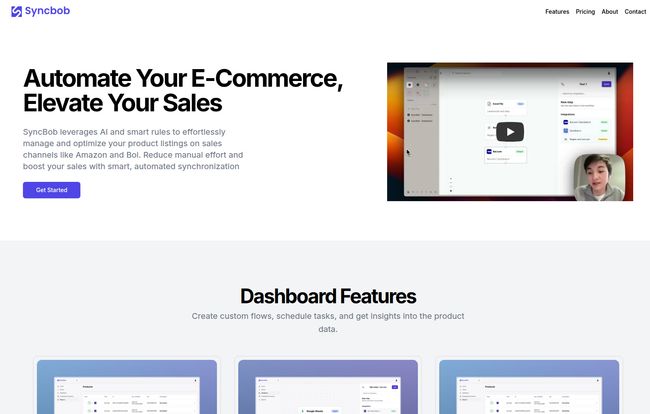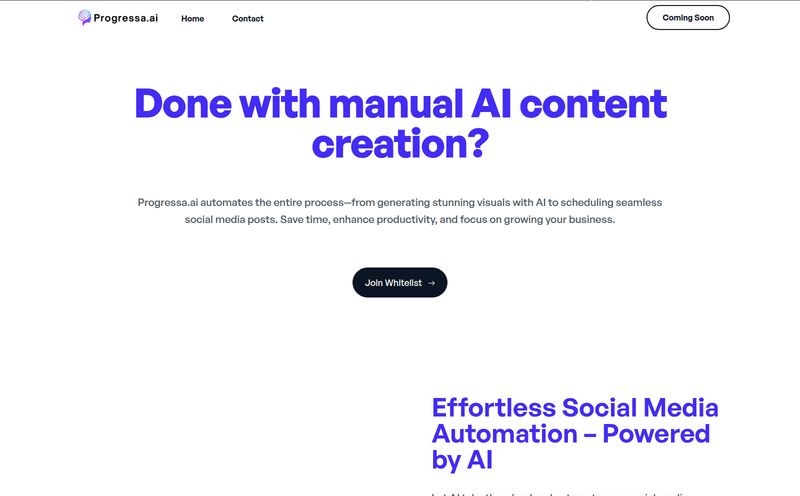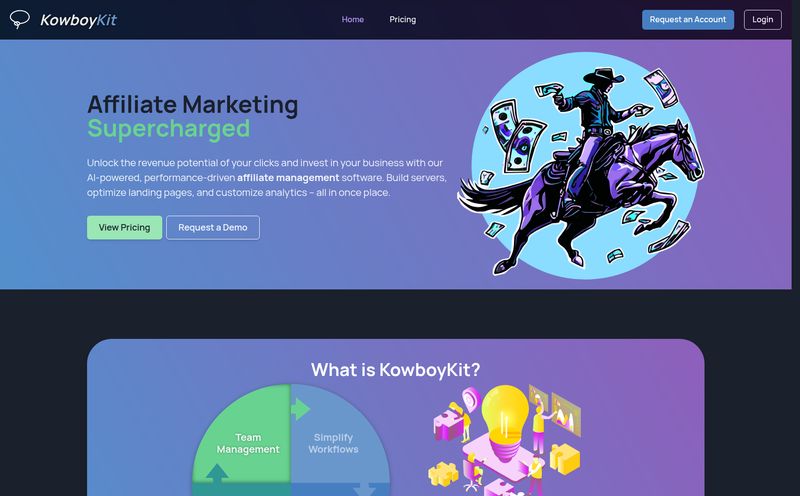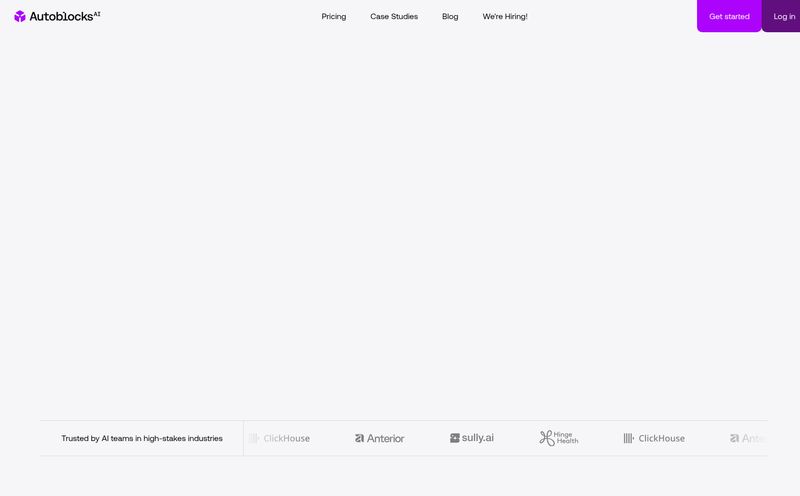If you're in e-commerce, you know the truth. The glamorous part—the branding, the killer ad campaigns, the cha-ching of a sale—is only about 10% of the job. The other 90%? It's the grind. It's the stuff that happens in the dark, hunched over a keyboard, fueled by lukewarm coffee. I'm talking about product data management.
Oh, the sheer joy of it. Wrestling with spreadsheets that have more columns than a Roman temple. Trying to figure out why Amazon is rejecting your upload for the seventeenth time because you used 'grey' instead of 'gray' in a dropdown menu that didn't exist yesterday. Or my personal favorite, tailoring the same product information for Bol.com, then for your Shopify store, then for Google Merchant Center. It’s a soul-crushing, time-sucking vortex. I've been there. We've all been there.
So, whenever a tool pops up promising to automate this digital drudgery, my ears perk up. I’m skeptical, of course. Years in this game will do that to you. But I'm also hopeful. The latest one to cross my desk is called SyncBob, and its whole pitch is about using AI to tame the product data beast. I had to take a look.
So, What's the Deal with SyncBob?
At its core, SyncBob is a bridge. It’s a smart connector between your product source (wherever that may be) and the various marketplaces you sell on. Think of it as a super-intelligent translator and assistant for your product listings. Instead of you manually copy-pasting, reformatting, and filling in endless required fields for each channel, SyncBob steps in to do the heavy lifting.
It uses AI and what it calls 'smart rules' to automatically enrich your product data. This means it can look at your product title 'Nike Air Max 270 Black Size 10' and intelligently fill out the brand, model, color, and size attributes that Amazon or Bol demand. It’s designed to get your products listed faster, with fewer errors and, theoretically, a lot less of your precious time.
The Core Features That Actually Matter
Fancy websites are one thing, but the feature set is where the rubber meets the road. After digging around, a few things stood out to me.
The AI-Powered Data Enrichment
This is the main event. The idea that an AI can intelligently parse your product info and automatically complete the mandatory (and often bizarrely specific) fields for different platforms is a game-changer. It’s like hiring a junior merchandiser who never sleeps or complains. Of course, the million-dollar question is accuracy. AI isn't infallible, and I'd still want to keep an eye on its work, but the potential to cut down on 80-90% of that manual entry is incredibly appealing.
Effortless Multi-Platform Syncing
For anyone selling on more than just their own website, this is huge. SyncBob lists support for big players like Amazon, Bol.com, Shopify, and Google Merchant Center. Managing inventory is one thing, but managing the presentation of that inventory across channels is a whole different headache. A tool that centralizes this and handles the unique requirements of each platform is worth its weight in gold.
A Dashboard That Gives You Control
I was half-expecting a black box where you put data in and pray it comes out right. The dashboard screenshots suggest something more sophisticated. You can create custom workflows, schedule tasks, and get insights into your data. This is critical. It shows that it's not just about automation; it's about giving you a command center to manage the process. You're still the pilot, SyncBob is just a very advanced autopilot system.

Visit SyncBob
My Honest Take: The Good, The Bad, and The AI
Alright, no tool is perfect. Let's break down my impressions into what I genuinely like and what gives me pause.
The Things I Really Like
First off, the time-saving potential is undeniable. If it works as advertised, this could free up countless hours for sellers to focus on marketing, customer service, and growth. That alone is a massive win. I'm also a huge fan of their Free Forever plan. It gives you a chance to kick the tires with up to 100 products without pulling out a credit card. It shows confidence in their product, and I respect that. Finally, the focus on getting listings live by handling mandatory specs is a very smart angle. It addresses a direct, tangible pain point that every marketplace seller has felt.
Some Potential Hurdles to Consider
Okay, let's talk about the elephant in the room: the price tag on the higher tiers. As you scale, SyncBob's cost scales too, and it can get up there for large operations. This isn't a cheap plugin; it's a serious business investment. Secondly, the reliance on AI means you can't just set it and forget it—at least not at first. You'll need to monitor its suggestions and ensure accuracy. Garbage in, garbage out still applies. Lastly, some of the more powerful features, like the number of custom workflows or 'SmartForms', are gated behind the pricier plans, which is standard SaaS practice but something to be aware of.
Let's Talk Money: A Breakdown of SyncBob's Pricing
The pricing structure is pretty extensive, which is good because it means there's likely a fit for everyone from a startup to a massive enterprise. I've laid it out in a table to make it easier to digest. All prices are monthly.
| Plan | Price | Products | Best For |
|---|---|---|---|
| Free | €0 | 100 | Getting started and testing the AI tools. |
| Starter | €29.99 | 1,000 | Small startups with a growing catalog. |
| Growth | €79.99 | 5,000 | Established businesses feeling the pain of manual data entry. |
| Professional | €149.99 | 20,000 | Rapidly expanding retailers needing more power. |
| Business | €249.99 | 100,000 | Advanced retail operations with large catalogs. |
| ...and up | €399.99+ | 200k+ | Enterprise and unlimited plans for huge operations. |
For a full, detailed list of features per plan, it's best to check their official pricing page.
Who Is This Really For?
After going through it all, I have a pretty clear picture. SyncBob isn't for the hobbyist selling a few handmade items on Etsy. It's built for serious ecommerce businesses. Specifically, I see it being a perfect fit for:
- The Multi-Channel Seller: If you're juggling a Shopify store, an Amazon FBA business, and a Bol.com account, this tool is practically screaming your name.
- The Rapidly Growing Brand: You know that tipping point where your spreadsheets start to crash and your team is spending more time on data entry than on sales? That's the sweet spot for a tool like this.
- E-commerce Agencies: For agencies managing product catalogs for multiple clients, the centralization and automation could be a massive efficiency boost.
So, Is SyncBob the Answer to Our Prayers?
Look, there's no magic wand in ecommerce. But SyncBob feels less like magic and more like a really, really smart power tool. It’s tackling one of the most tedious, unrewarding, yet absolutely critical parts of selling online. By automating data enrichment and synchronization, it promises to give back our most valuable resource: time.
Is it a bit of an investment? Yes. Does the AI need a human guiding hand? Probably. But for a growing business drowning in product data, the return on investment could be huge. The free plan makes it a no-brainer to at least try. In a world where every minute counts, automating the grind might just be the smartest move you can make.
Frequently Asked Questions
- What is SyncBob in simple terms?
- SyncBob is an automation tool for e-commerce sellers. It uses AI to help manage and update your product information across different platforms like Amazon, Bol.com, and Shopify, saving you from doing it manually.
- Does SyncBob have a free plan?
- Yes, it has a 'Free Forever' plan that allows you to manage up to 100 products. It's a great way to test out its core features without any financial commitment.
- What platforms does SyncBob support?
- It supports major e-commerce platforms and marketplaces, including Amazon, Bol.com, Shopify, and Google Merchant Center, with plans to add more.
- Is SyncBob a PIM system?
- It has many features of a PIM (Product Information Management) system, but its main focus is on the AI-driven automation and synchronization to marketplaces, which sets it slightly apart from traditional PIMs.
- How does the AI in SyncBob actually work?
- The AI analyzes your existing product data (like titles and descriptions) and uses that context to automatically fill in required attributes like brand, color, size, material, and other specifications required by each unique sales channel.
- Is SyncBob easy to use for someone not very technical?
- It's designed to be user-friendly with a clear dashboard. While there might be a small learning curve in setting up your first 'custom sequences' or workflows, its purpose is to simplify a complex process, so it's built with usability in mind.



